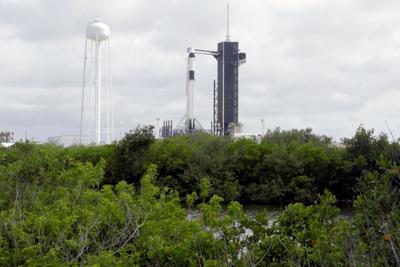The Center Square (The Center Square) – Florida’s 15-year-old space agency has secured its first tenant for a 400-acre industrial park ringing Cape Canaveral’s former space shuttle runway and has doubled partnerships with commercial aerospace companies with $2.8 billion in contracts “in the pipeline,” state officials told a Senate panel Wednesday.
But Space Florida Vice President Todd Romberger warned the Senate Military & Veterans Affairs, Space and Domestic Security Committee that Florida faces competition from other states, noting Florida only ranks seventh nationally – down from fifth three years ago – in aerospace jobs.
According to Space Florida, the state’s public-private space development agency established in 2006, 17,144 commercial companies employed at least 132,000 in high-tech, high-wage jobs within Florida’s $20 billion aerospace industry in 2019, the last time the agency posted figures.
While the number of aerospace companies operating in the Sunshine State is the nation’s second-highest, more people are working in high-wage aerospace jobs in at least six states, said Romberger, who is leading Space Florida’s Spaceports Business Unit, which manages five “spaceport” special districts.
Romberger told the panel that Space Florida’s goal is to increase its business investment portfolio to $10 million increase the state’s aerospace workforce to the fourth largest in the country.
Space Florida’s new agreement with Boca Raton-based Terran Orbital is a key step in meeting those goals.
Gov. Ron DeSantis was in Brevard County Monday to announce Terran Orbital will build a $300 million satellite factory that will employ 2,100 people and produce up to 1,000 satellites a year “from the smallest components to the final product.”
“This will be the largest satellite manufacturing facility in the entire world,” DeSantis said, noting the average annual wage of workers in the 660,000-square-foot plant will be $84,000.
Terran Orbital manufactures CubeSATs, or nanosatellites, smaller than kitchen toasters and “the next generation of earth surface imaging,” said the company, which plans to break ground by mid-2022 and be at full production within three years.
Terran will build its factory next to the former Shuttle Landing Facility, unused since the last shuttle launch in 2011. Space Florida is leasing the 5,000-foot long, 300-foot-wide runway from NASA and soliciting “horizontal launch and landing firms” to come and go from space there.
Space Florida is building a mile-long utility corridor to open 400 acres around Cape Canaveral for development. Terran Orbital is the first tenant to sign on.
Space Florida President Frank DiBello said the agency is spurring the development of a “satellite on-demand” industry with manufacturing plants near launch pads.
“You have a loss of a satellite, you want to be able to replenish it the next day,” he said Monday. “This is hopefully a capability where you can order up your satellite one afternoon and get it on orbit within a couple of days.”
The Space Florida Launch & Landing Facility industrial park follows the development of nearby Exploration Park, where Firefly Aerospace and Jeff Bezos-owned Blue Origin own factories that build orbital launch vehicles. Other tenants include Elon Musk-owned SpaceX, Boeing, Relativity Space, Lockheed and Made In Space Inc.
Another challenge could be capacity. U.S. Space Force Brig. Gen. Stephen Purdy told the panel, noting demand for the two Cape Canaveral launch pads is increasing exponentially and that they must be redesigned to handle a multitude of different rockets, or new ones built that can do so.
”We need to build our processes and technologies so that we’re ready to launch a couple hundred a year, a couple a day, and be able to call upon six- to 12-hour increments and be able to launch,’” Purdy said. “That’s the world that we’re steadily marching into.”
By John Haughey
October 2, 2021


